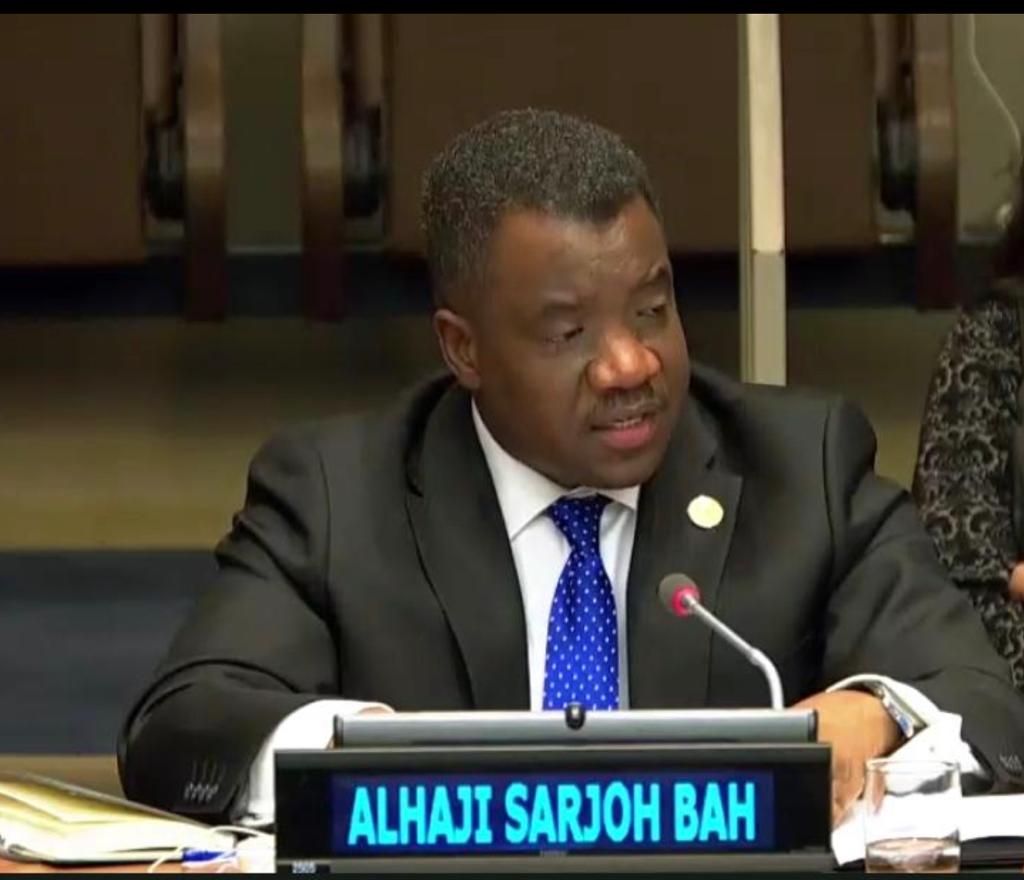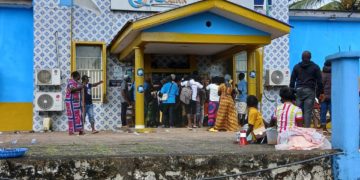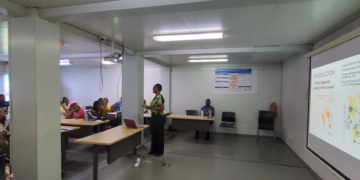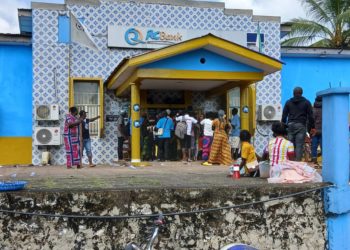African Union member states have been urged to up investment in counter-piracy and reinforce maritime domain awareness to put a check on spiraling criminal activities in the Gulf of Guinea, described as the most dangerous sea route in world today.
The directorate of conflict management, the agency responsible for maritime security within the AU Commission, says insecurity in the maritime sector, especially in the Gulf of Guinea, poses major threat to the economy and the environment of the region.
Dr Alhaji Sarjoh Bah, the head of the agency, raised the concerns during the latest meeting of the AU’s Peace and Security Council in Addis Ababa, Ethiopia on Tuesday, 28 June. He called on the regional bloc to encourage member states to enhance their implementation of regional instruments and other relevant international initiatives set out to counter piracy and tackle maritime insecurity.
Mr Bah also made a case for strengthened international support in countering piracy and fighting other maritime illicit activities.
The meeting was the 1091st edition of the AU Peace and Security Council.
The Gulf of Guinea, a region stretching from West to Central Africa, has been a major security concern for over a decade. But officials say piracy only recently took roots there.
The approximately 6,000 km of coastline is an important shipping zone transporting oil and gas, as well as goods to and from central and southern Africa. It is estimated that around 1,500 fishing vessels, tankers, and cargo ships navigate the stretch of water daily, making it a lucrative venture for gangs involved in various criminal activities, including armed robbery and kidnapping, illegal fishing, smuggling and trafficking, and transnational organised crime.
Piracy was concentrated in the Gulf of Aden in the Indian Ocean, part of which is in East Africa, particularly Somalia where pirates dominated the scene for the most part of the last decade.
Intense international campaign led to a substantial decrease piracy there, forcing the gangs to seek new grounds in the Gulf of Guinea, where the problem had been mainly oil theft, according to the AU.
“Piracy and armed robbery in the Gulf of Guinea is predominantly related to the theft of oil and linked with the regional black market and organized crime. While hostages have been taken, ransoms do not appear to be the driving goal, like we witnessed in the Gulf of Aden,” said Bah.
“There are also other related transnational organized crimes linked to maritime insecurity in the region such as money laundering and its potential linkages with financing terrorist activities inland, along with illegal trade in arms and drug trafficking, which equally pose a serious threat to maritime security in the region,” he added.
The concerns in the Gulf of Guinea insecurity have been further heightened by the involvement of terrorists organizations who have been pushed out from the restive Middle Eastern countries of Syria, Iraq and Yemen.
“Because of the volume of Continental trade that uses the seas, vessels become lucrative targets as they offer opportunities for economic gain for the terrorists, and destabilization of the Member States,” noted Mr Bah.
Data from the International Maritime Bureau (IMB) show that in 2020 there were 84 attacks on ships, with 135 seafarers kidnaped for ransom. The region reportedly experienced a nearly 50% increase in kidnapping for ransom between 2018 and 2019, and around 10 % increase between 2019 and 2020. This accounts for just over 95% of all kidnappings for ransom at sea, according to the international marine crime fighting agency.
Several initiatives have been established to counter piracy and other illicit maritime activities in the region. Key among them is the Yaoundé Code of Conduct, which committed member countries from the Economic Community of West African States (ECOWAS), the Economic Community of Central African States (ECCAS) and the Gulf of Guinea Commission (GGC) to act against piracy, armed robbery on ships, and illicit maritime activity in the regions.

The GGC comprises a group of six African countries directly affected by the Gulf of Guinea insecurity.
The Yaoundé architecture, as the intra-regional commitment is called, is the most comprehensive plan on which all responses to the Gulf of Guinea insecurity are based. Signed at an Heads of State Summit in the Cameroonian capital, Yaoundé in June 2013, it enjoins the member states to work towards tackling maritime crime in its widest sense.
This instrument has been the main framework for regional cooperation and information-sharing to address the maritime insecurity in the region, in coordination with satellite offices like the Interregional Coordination Centre (ICC) in Yaoundé, the Regional Centre for Maritime Security of West Africa (CRESMAO) in Abidjan, Ivory Coast, and the Regional Centre for Maritime Security of Central Africa (CRESMAC) in Pointe Noire, Congo.
Multinational Maritime Coordination Centres (MMCC) have also been set up as zonal centres covering all West and Central African nations.
Last year the AU signed a Memorandum of Understanding with the GGC with the aim of reinforcing joint efforts in addressing maritime security and safety in the three regions.
“We are hopeful that the MoU will help in the operationalization of the 2050 African Integrated Maritime Strategy in the region, the African Union Blue Economy strategy, as well as the “African Charter on Maritime Security and Safety and Development in Africa (Lomé Charter),” said Mr Bah.
Within the framework of the African Standby Force (ASF), the Commission says it plans to organize the first maritime exercise, the main aim of which is to enhance preparedness and capability of the Force in addressing maritime security threats in the Continental waters.
It is expected that this exercise will specifically lead to enhanced collaboration among the countries, and strengthen sharing of maritime information and intelligence amongst all partners.






















